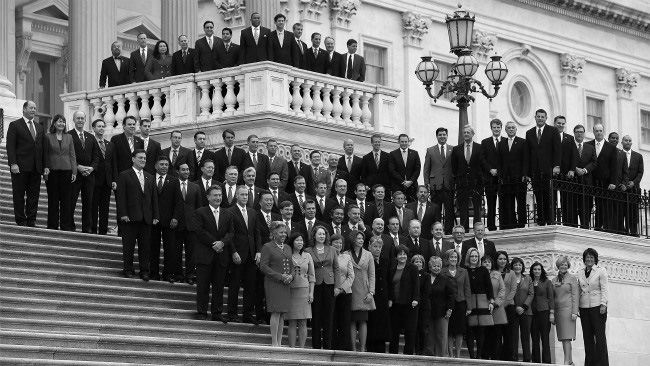Midterm Elections: Dramatic, Drastic, and Diverse
Late on November 6th, as polling stations closed across the United States of America, a change to our government was cemented that will last for years and will impact our democracy decades. As Republicans strengthen of control over the Senate and the Democrats flip the house, politics for the next decade has rapidly changed in the 15 hours polls were open across America.
Democrats, hoping to regain political majorities and authority in Congress, went into the midterms with both advantages and disadvantages. In addition to the reliable advantage of going into midterms having lost the Presidential Election, Democrats were able to create and benefit financially from a base of small-donor fundraising, raising 50% more than Republicans in House races, and 35% more for Senate candidates. However, Democrats also draw into their ranks large numbers of millennials and Latinos, groups who are known to have low turnout rates, a trend that was unlikely to change going into this election. In addition, recent district maps have been controlled and drawn up to disadvantage Democrats in many regions across the country.
Yet it seems Democrats had a large enough tailwind for some victories in Congress, notably in the House of Representatives. Due to a 2-year term, the entire House was up for election this year. Going into the election, Republicans held 47 more seats than Democrats in the House of 435. However, due to the aforementioned advantages, along with incredibly effective campaigning, a large increase in voter turnout across the country, and general dissatisfaction with the current national government, control over the House has changed hands and now Democrats have gained enough seats for 234/201 majority.
However, the heavy setbacks experienced by the GOP in the house was somewhat cushioned by results in the Senate. Of the Republican majority of 51 in the Senate, only nine were up for election against Democrats’ 26, allowing Republicans a larger possible gain than loss. In addition, there were Democratic incumbents up for election in Ohio, North Dakota, Indiana, and Florida states that Trump carried in 2016 and Republicans took once more this November. While there were some Republican losses in the Senate, and some Democratic threats came far closer to succeeding than expected, the GOP will go into January with a stronger lead against Democrats in the Senate.
Despite the extreme shift in the House of Representatives, and the many victories Democrats claimed in gubernatorial races across America, the results from the 2018 midterms were largely expected and in some cases all but guaranteed. While there were a few surprises in Oklahoma’s 5th District, the Indiana Senate Race, and South Carolina’s 1st District, Democratic victories in the House and Republican expansion in the Senate were predicted and foreseen going into the 2018 elections. So what was so exciting about this year’s midterms? Even though much of November’s results seemed like a foregone conclusion, the historical significance of the 116th Congress held no less weight. The most important of this midterm’s accomplishments, Donald Morton ‘94 noted, was the make-up of the Congresspersons-elect; starting next January, Congress will be “more than diverse than ever” he says. Indeed, among the newly elected Congressional Representatives are the first two Muslim women elected to the House, the first two Native American women elected to the house, and the first openly bisexual senator, in addition to the largest amount of women ever elected Congress. Estelle Hegenbarth ‘21 looked forward to the change in demographics, saying “I’m glad there is a Congress able to represent more ethnic groups.” Kevin Wolynetz ‘19, who aligns himself with the Democratic Party was a little more afraid of what might happen before January 21st. “I’m happy that the Democrats won the house, but I’m worried how the Republican Senate might retaliate after losing the House,” he admitted.
And it is true that Republicans, currently a Federal Government Trifecta, have limited time to pass legislation without obstruction from Democratic opponents. With the House under the Democrats’ control, the White House has lost significant support in the Legislative Branch, and Republican’s power and impunity in federal office will once more be checked by an opposing party. The shifts in Congress also entail changes in how the Government operates starting this January.
The Midterm Elections will have a profound impact on our country. As Democrats take the House, and Republicans strengthen their grasp on the Senate, America finds itself with a roster of Congresspersons representing a larger range of its citizens, and with a Legislative Branch of the Federal Government more opposed to and willing to challenge the White House.



































